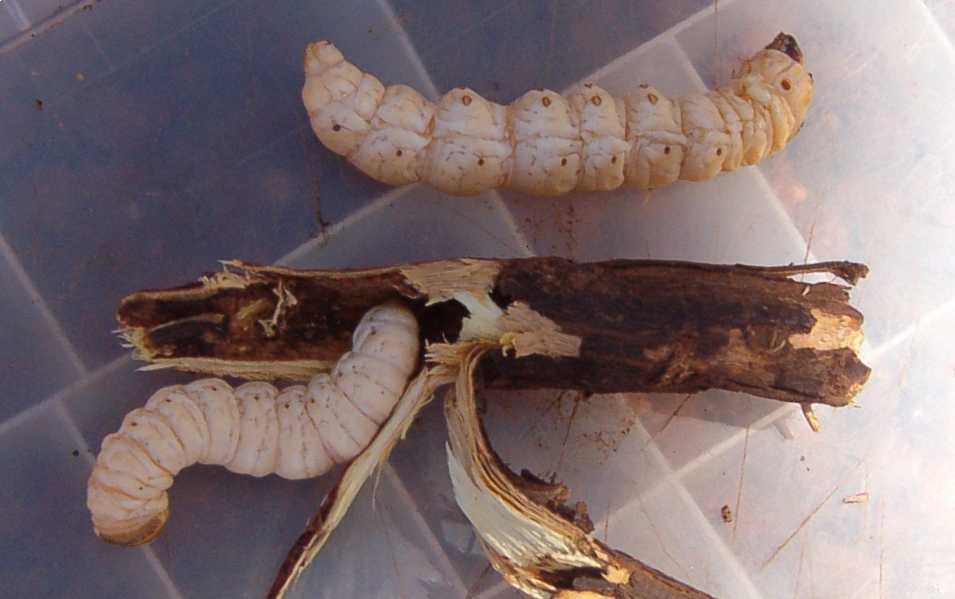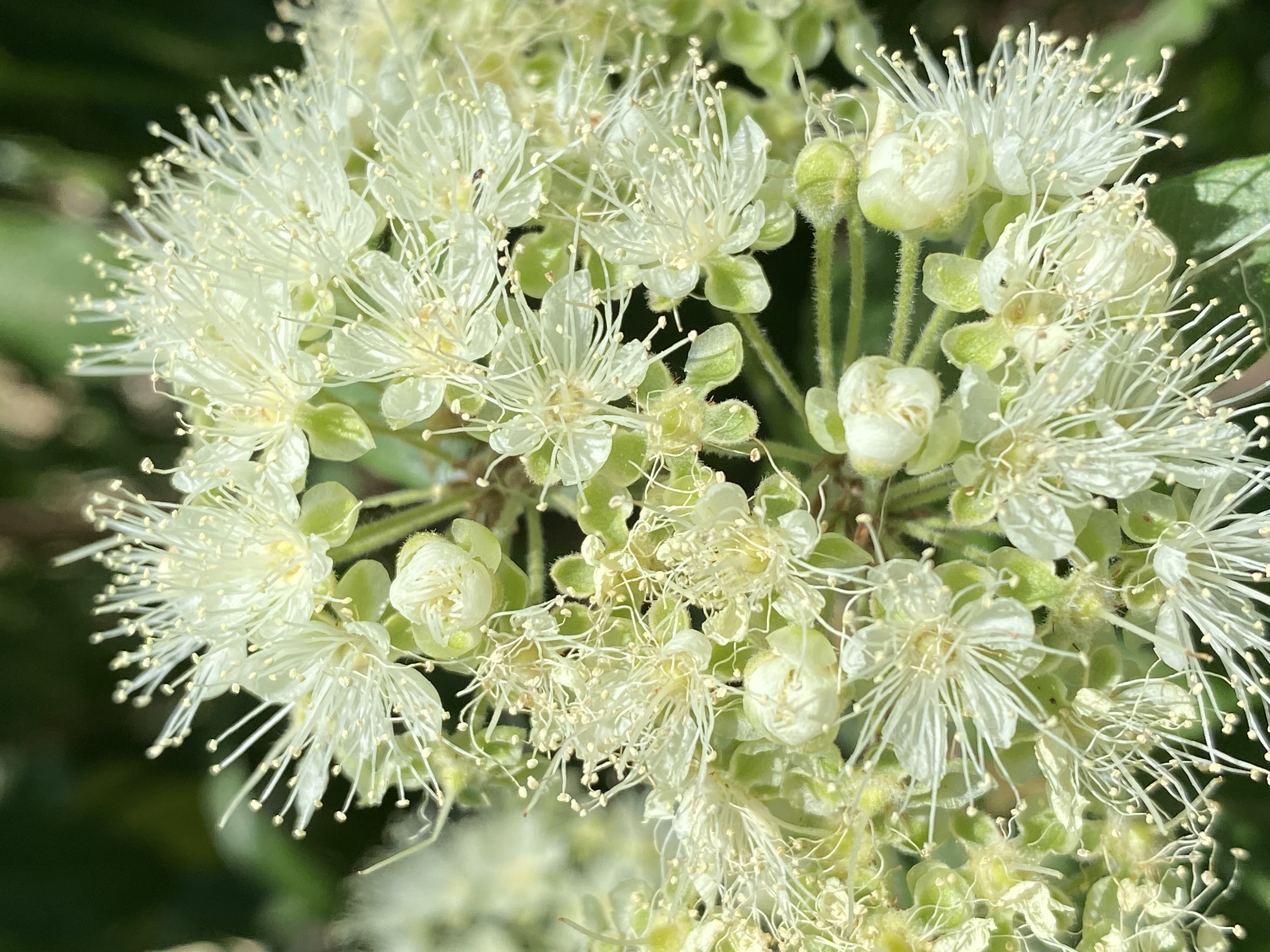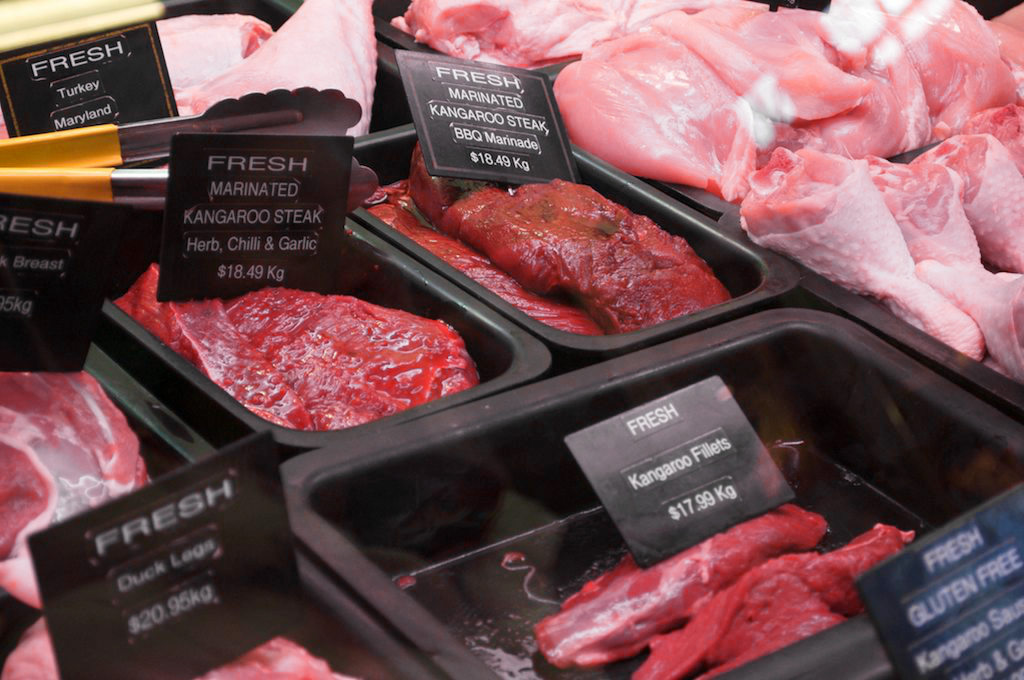|
Bushfood
Bush tucker, also called bush food, is any food native to Australia and historically eaten by Indigenous Australians and Torres Strait Islander peoples, but it can also describe any native flora, fauna, or fungi used for culinary or medicinal purposes, regardless of the continent or culture. Animal native foods include kangaroo, emu, witchetty grubs and crocodile, and plant foods include fruits such as quandong, kutjera, spices such as lemon myrtle and vegetables such as warrigal greens and various native yams. Traditional Indigenous Australians' use of bushfoods has been severely affected by the colonisation of Australia beginning in 1788 and subsequent settlement by non-Indigenous peoples. The introduction of non-native organisms, together with the loss of and destruction of traditional lands and habitats, has resulted in reduced access to native foods by Aboriginal people. Since the 1970s, there has been recognition of the nutritional and gourmet value of native foods ... [...More Info...] [...Related Items...] OR: [Wikipedia] [Google] [Baidu] |
Witchetty Grub
The witchetty grub (also spelled witchety grub or witjuti grub) is a term used in Australia for the large, white, wood-eating larvae of several moths. In particular, it applies to the larvae of the Cossidae, cossid moth ''Endoxyla leucomochla'', which feeds on the roots of the Acacia kempeana, witchetty bush (after which the grubs are named) that is widespread throughout the Northern Territory and also typically found in parts of Western Australia and South Australia, although it is also found elsewhere throughout Australia. The term can also apply to larvae of other cossid moths, ghost moths (Hepialidae), and longhorn beetles (Cerambycidae). The term is used mainly when the larvae are being considered as food. The grub is the most important Entomophagy, insect food of the desert and has historically been a staple in the diets of Aboriginal Australians. Terminology The Arabana language, Arabana term for the grub is (with emphasis on initial syllables); means grub, and refer ... [...More Info...] [...Related Items...] OR: [Wikipedia] [Google] [Baidu] |
History Of The Bushfood Industry
The modern Australian native food industry, also called the bushfood industry, had its initial beginnings in the 1970s and early 1980s, when regional enthusiasts and researchers started to target local native species for use as food. Indigenous Australians had been harvesting many species for use as food ( bush tucker) and medicines (bush medicine) for millennia. In the mid 1970s Brian Powell recognised the commercial potential of quangdong fruit and began its cultivation in orchards. Following this, the CSIRO became involved in quangdong research. In the late 1970s, Peter Hardwick began investigating subtropical native plants suitable for commercial cropping, selecting fruit species like riberry, Davidsonia, and later leaf-spices, like lemon myrtle, Aniseed myrtle, and Dorrigo Pepper. Hardwick started targeting strong flavoured species suitable for processing, which later became the main industry strategy. In the 1980s, Hardwick worked in the New South Wales Department of ... [...More Info...] [...Related Items...] OR: [Wikipedia] [Google] [Baidu] |
Lemon Myrtle
''Backhousia citriodora'', commonly known as lemon myrtle, lemon scented myrtle or lemon scented ironwood, is a flowering plant in the family Myrtaceae. It is native to the subtropical rainforests of central and south-eastern Queensland, Australia, with a natural distribution from Mackay to Brisbane. Description and ecology The species can reach in height, but is often smaller. The leaf, leaves are evergreen, opposite, lanceolate, long and broad, glossy green, with an entire margin. The flowers are creamy-white, in diameter, produced in clusters at the ends of the branches from summer through to autumn. After petal fall, the calyx is persistent. A significant fungal pathogen, myrtle rust (''Uredo rangelii'') was detected in lemon myrtle plantations in January 2011. Myrtle rust severely damages new growth and threatens lemon myrtle production. Etymology Lemon myrtle was given the botanical name ''Backhousia citriodora'' by Ferdinand von Mueller in 1853 after his friend, the ... [...More Info...] [...Related Items...] OR: [Wikipedia] [Google] [Baidu] |
Vic Cherikoff
Vic Cherikoff is regarded as an authority on Australian native foods and its associated industry, having been involved in the selection and commercialization of many of the 35 or so indigenous Australian plant foods now in the market place. He is an author of three books and a number of scientific papers. He promotes Australian cuisine through his cooking show, Dining Downunder, which has screened in 48 countries. He funded, produced, and hosted this TV show, along with chefs, Benjamin Christie and Mark McCluskey. Together with Christie, Cherikoff also runs Australian cuisine promotions around the world, often working together with Austrade and international hotels. In the 1980s, Cherikoff worked in the Human Nutrition Unit of the University of Sydney The University of Sydney (USYD) is a public university, public research university in Sydney, Australia. Founded in 1850, it is the oldest university in both Australia and Oceania. One of Australia's six sandstone universities ... [...More Info...] [...Related Items...] OR: [Wikipedia] [Google] [Baidu] |
Macadamia Nut
''Macadamia'' is a genus of four species of trees in the flowering plant family Proteaceae. They are indigenous to Australia—specifically, northeastern New South Wales and central and southeastern Queensland. Two species of the genus are commercially important for their fruit, the macadamia nut (or simply macadamia). Global production in 2015 was . Other names include Queensland nut, bush nut, maroochi nut or bauple nut. It was an important source of bushfood for the Aboriginal peoples. The nut was first commercially produced on a wide scale in Hawaii, where Australian seeds were introduced in the 1880s, and which for more than a century was the world's largest producer. South Africa has been the world's largest producer of the macadamia since the 2010s. The macadamia is the only widely grown food plant that is native to Australia. Description ''Macadamia'' is a genus of evergreen trees that grows tall. The leaves are arranged in whorls of three to six, lanceolate to ... [...More Info...] [...Related Items...] OR: [Wikipedia] [Google] [Baidu] |
Flora Of Australia
The flora of Australia comprises a vast assemblage of plant species estimated to over 21,000 vascular and 14,000 non-vascular plants, 250,000 species of fungi and over 3,000 lichens. The flora has strong affinities with the flora of Gondwana, and below the family level has a highly endemic angiosperm flora whose diversity was shaped by the effects of continental drift and climate change since the Cretaceous. Prominent features of the Australian flora are adaptations to aridity and fire which include scleromorphy and serotiny. These adaptations are common in species from the large and well-known families Proteaceae ('' Banksia''), Myrtaceae (''Eucalyptus'' - gum trees), and Fabaceae (''Acacia'' - wattle). The arrival of humans around 50,000 years ago and the settlement by Europeans from 1788, has had a significant impact on the flora. The use of fire-stick farming by Aboriginal people led to significant changes in the distribution of plant species over time, and the large ... [...More Info...] [...Related Items...] OR: [Wikipedia] [Google] [Baidu] |
Santalum Acuminatum
''Santalum acuminatum'', the desert quandong, is a hemiparasitic plant in the sandalwood family, Santalaceae, (Native to Australia) which is widely dispersed throughout the central deserts and southern areas of Australia. The species, especially its edible fruit, is also commonly referred to as quandong or native peach. The use of the fruit as an exotic flavouring, one of the best known bush tucker (bush food), has led to the attempted domestication of the species. Desert quandong is an evergreen tree, its fruit can be stewed to make pie filling for quandong pies or made into a fruit juice drink. The seed (kernel) inside the tough shell can be extracted to be crushed into a paste then be used on sore gums or an oral gum boil to ease the pain. Because it is one of the few drought-tolerant fruit trees in far-west New South Wales, it is popular to grow among many Aboriginal communities and the non-Indigenous Australians who are aware of it. Description ''Santalum acuminatum'' gro ... [...More Info...] [...Related Items...] OR: [Wikipedia] [Google] [Baidu] |
Joan Cribb
Joan Winifred Cribb (née Herbert; 14 April 1930 – 17 October 2023) was an Australian botanist and mycologist. Life and career Joan Winifred Herbert was born in Brisbane, Queensland, the daughter of botanists Vera and Desmond Herbert. She graduated from the University of Queensland with a Bachelor of Science with Honours and a Master of Science. She married fellow botanist Alan Cribb in 1954, and several years later joined him at the University of Queensland as a part-time lecturer and tutor. Cribb specialised in gasteroid fungi, describing twenty-one new species in that group, as well as fourteen new species of marine fungi. For over 45 years Joan Cribb travelled over Queensland discovering and recording gasteromycetes. She and her husband also investigated algae-inhabiting fungi found in marine habitats and have recorded occurrences of freshwater fungi in Queensland waterways. Cribb was awarded the Australian Natural History Medallion in 1994. In the 2020 Australia Da ... [...More Info...] [...Related Items...] OR: [Wikipedia] [Google] [Baidu] |
South Australia
South Australia (commonly abbreviated as SA) is a States and territories of Australia, state in the southern central part of Australia. With a total land area of , it is the fourth-largest of Australia's states and territories by area, which includes some of the most arid parts of the continent, and with 1.8 million people. It is the fifth-largest of the states and territories by population. This population is the second-most highly centralised in the nation after Western Australia, with more than 77% of South Australians living in the capital Adelaide or its environs. Other population centres in the state are relatively small; Mount Gambier, the second-largest centre, has a population of 26,878. South Australia shares borders with all the other mainland states. It is bordered to the west by Western Australia, to the north by the Northern Territory, to the north-east by Queensland, to the east by New South Wales, to the south-east by Victoria (state), Victoria, and to the s ... [...More Info...] [...Related Items...] OR: [Wikipedia] [Google] [Baidu] |
Alan Cribb
Alan Bridson Cribb Jr. (born 5 October 1925) is an Australian botanist and mycologist and an expert in marine and freshwater algae and seaweeds. He has also written on native and wild foods of Australia. Early life Alan Bridson Cribb Jr. was born in Ipswich, Queensland on 5 October 1925, the son of Alan Bridson Cribb, a grazier and his wife, Dorothy Shand. He grew up around Longreach and his father instructed him in a love for the Australian bush and an interest in natural history. The extended Cribb family lived in Ipswich, where the family business Cribb & Foote department store was located. Cribb studied at the University of Queensland, taking his B.Sc with first class honours in 1948. He collected algae on a UQ Science Students excursion to Noosa Heads in 1948, and this collection was used to forward his future field of study. Queensland did not have any experts in algae at the time. Cribb travelled to New Zealand where he studied under Professor Val Chapman, before moving ... [...More Info...] [...Related Items...] OR: [Wikipedia] [Google] [Baidu] |
Kangaroo Meat
Kangaroo meat is produced in Australia from wild kangaroos and is exported to over 61 overseas markets. Kangaroo meat is sourced from the four main species of kangaroos that are harvested in the wild. As of May 2024, Australia’s commercial kangaroo industry is the largest commercial land-based wildlife trade on the planet. Kangaroo harvesting only occurs in approved harvest zones, with quotas set to ensure population sustainability. In Victoria, quotas were formally introduced in 2019, starting at 93,640 kangaroos and peaking at 166,750 in 2023 before decreasing to 111,575 in 2024 to balance ecological and management needs. If numbers approach minimum thresholds harvest zones are closed until populations recover. Kangaroos are harvested by licensed shooters in accordance with a strict code of practice to ensure high standards of both humaneness and food hygiene. Meat that is exported is inspected by the Department of Agriculture, Fisheries and Forestry. The kangaroo has trad ... [...More Info...] [...Related Items...] OR: [Wikipedia] [Google] [Baidu] |
Hawaii
Hawaii ( ; ) is an island U.S. state, state of the United States, in the Pacific Ocean about southwest of the U.S. mainland. One of the two Non-contiguous United States, non-contiguous U.S. states (along with Alaska), it is the only state not on the North American mainland, the only state that is an archipelago, and the only state in the tropics. Hawaii consists of 137 volcanic islands that comprise almost the entire Hawaiian Islands, Hawaiian archipelago (the exception, which is outside the state, is Midway Atoll). Spanning , the state is Physical geography, physiographically and Ethnology, ethnologically part of the Polynesian subregion of Oceania. Hawaii's ocean coastline is consequently the List of U.S. states and territories by coastline, fourth-longest in the U.S., at about . The eight main islands, from northwest to southeast, are Niihau, Niihau, Kauai, Kauai, Oahu, Oahu, Molokai, Molokai, Lanai, Lānai, Kahoʻolawe, Kahoolawe, Maui, and Hawaii (island), Hawaii, a ... [...More Info...] [...Related Items...] OR: [Wikipedia] [Google] [Baidu] |








